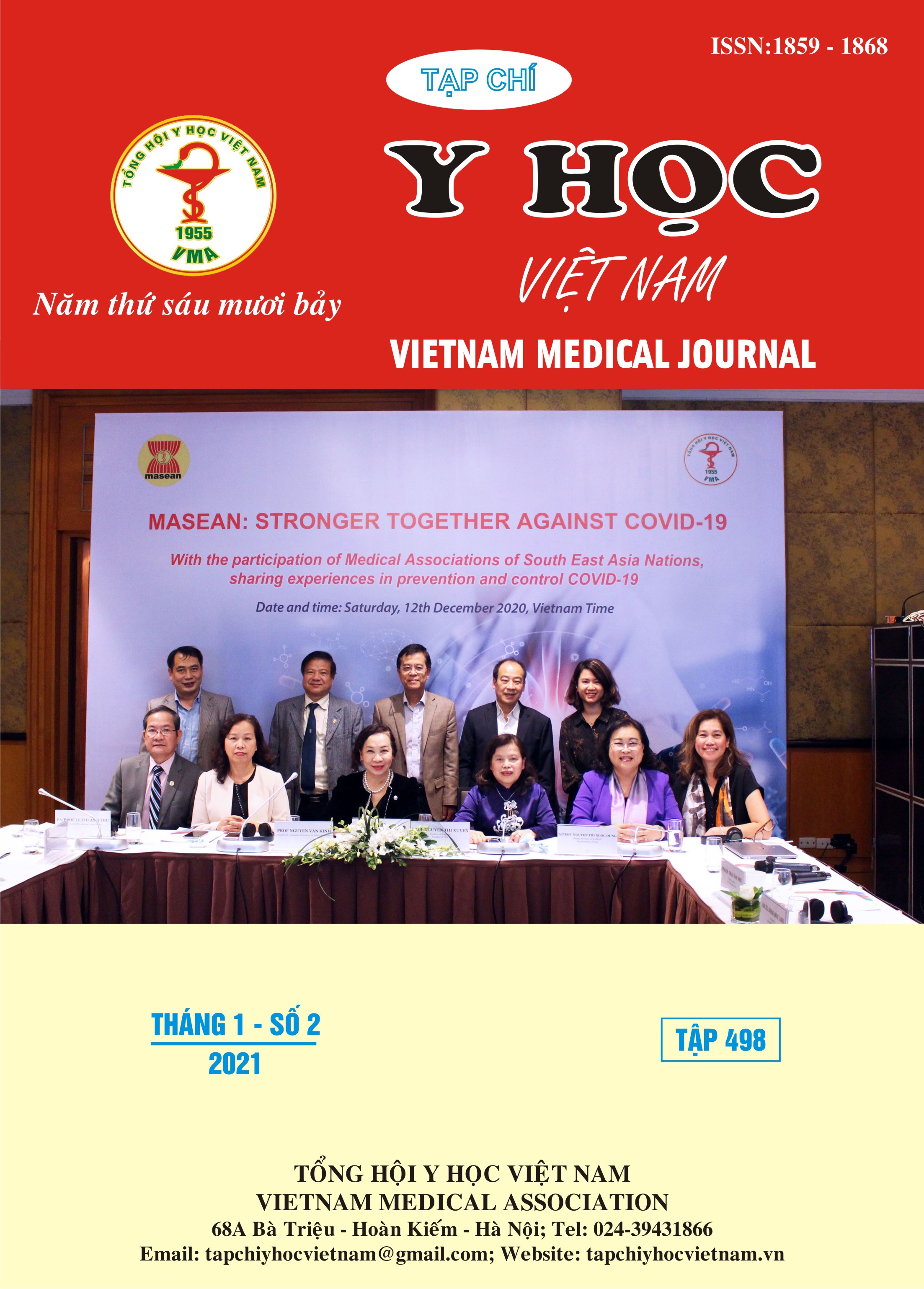CARBOHYDRATE ANTIGEN 19-9 (CA 19-9) AND CARCINOEMBRYONIC ANTIGEN (CEA) SERUM MARKERS ARE ASSOCIATED WITH SOME FACTORS OF CHOLANGIOCARCINOMA
Main Article Content
Abstract
Background: Cholangiocarcinoma (CCA) is a primary malignant tumor that originates in bile duct epithelial cells. The disease is often detected at late stage and the bad prognosis of this tumor leads to an urgent need to learn about biomarkers. Aim: to evaluate the relationship between serum CEA, CA 19-9 levels and factors in CCA patients. Methods: A prospective study was carried out in 52 CCA patients. Patients were immunized Carbohydrate antigen 19-9 (CA 19-9), Carcinoembryonic antigen (CEA); abdominal CT scan, endoscopy, bone scintigraphy to assess metastases. Diagnosis of CCA was determined by biopsy and histopathological examination by Hematoxylin-Eosin staining method. Results: The rate of increase in CA 19-9 was 63.5%. The CEA increase rate was 44.2%. CA 19-9 was highest (756.2 ± 871.3) in TNM stage 3, p = 0.9. The highest CEA (184.6 ± 371.2) in TNM stage 3, p = 0.3. Mean CA 19-9 of intra hepatic CCAwas 715.3 ± 605.7, extra hepatic CCA 436.2 ± 517.5, p = 0.2. The mean CEA of intra hepatic CCAwas 88.0 ± 268.9, extra hepatic CCA 17.6 ± 23.4, p = 0.4. CA 19-9 serum level and tumor size had a weak linear correlation, r = 0.22 (r <0.3), p = 0.11. CEA serum level and tumor size had a weak linear correlation, r = 0.19 (r <0.3), p = 0.17. Mean CA 19-9 of resectable patients was 278.4 ± 522.6, much lower than that of unresectable patients 756.8 ± 582.4, p = 0.02. Mean CEA of resectable patients was 49.8 ± 122.1, lower than that of unresectable patients 82.6 ± 268.0, p = 0.7. Conclusion: CA 19-9 levels in resectable patients were lower than patients treated with chemotherapy, radiation and palliative care. No association between CEA and TNM stage, biliary cancer classification, indications for treatment.
Article Details
Keywords
Cholangiocarcinoma, Carbohydrate antigen 19-9, Carcinoembryonic antigen
References
2. Cardinale V, Semeraro R, Torrice A, et al. (2010). Intra-hepatic and extra-hepatic cholangiocarcinoma: New insight into epidemiology and risk factors. World J Gastrointest Oncol., 2(11): 407–416.
3. Malaguarnera G, Paladina I, Giordano M, et al. (2013). Serum Markers of Intrahepatic Cholangiocarcinoma. Dis Markers., 34(4): 219–228.
4. Sasaki K, Margonis G.A, Andreatos N, et al. (2018). Serum tumor markers enhance the predictive power of the AJCC and LCSGJ staging systems in resectable intrahepatic cholangiocarcinoma. HPB (Oxford). 20 (10): 956-965.
5. Ramage J.K, Donaghy A, Farrant J.M, et al. (1995). Serum Tumor Markers for the Diagnosis of Cholangiocarcinoma in Primary Sclerosing Cholangitis. Gastroenterology, 108:865-869
6. Qin X.L, Wang Z.R, Shi J.S, et al. (2004). Utility of serum CA19-9 in diagnosis of cholangiocarcinoma: in comparison with CEA. World Journal of Gastroenterology, 10(3):427-432.
7. Jaklitsch M, Petrowsky H. (2019). The power to predict with biomarkers: carbohydrate antigen 19-9 (CA 19-9) and carcinoembryonic antigen (CEA) serum markers in intrahepatic cholangiocarcinoma. Translational Gastroenterology and Hepatology, 20: 956-65.
8. Loosen S.H, Roderburg C, Kauertz K.L, et al. (2017). CEA but not CA19-9 is an independent prognostic factor in patients undergoing resection of cholangiocarcinoma. Scientific Reports., 7: 16975.


